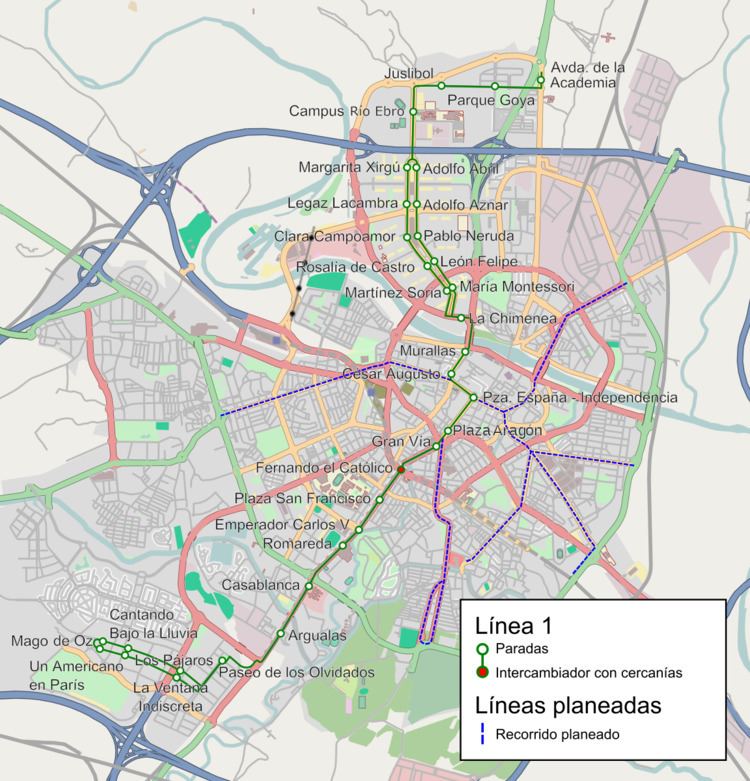 | ||
The Zaragoza Tram (Spanish: Tranvía de Zaragoza) is a tram system in the Spanish city of Zaragoza, capital of the autonomous community of Aragon. Line 1 will be expanded with a second and third line.
Contents
History
In 1885, the first animal traction tram line was established.
In 1902, Zaragoza had five main lines and one secondary line. In the same year, one of the lines were electrified. The network was expanding quickly in a radial form across the city, with the present Spain square as the center.
The 1950s was the heydey of the Zaragoza Tram.
From the 1960s, the tram system declined, with little or no investment and was gradually converted to bus operation
On 23 January 1976 the last Zaragoza tram line (Parque-San José) disappeared and the company changed its name to Transportes Urbanos de Zaragoza (Urban Transport Company of Zaragoza).
10 June 2009 The Traza consortium of Tuzsa, CAF, FCC Construcción, Acciona, Ibercaja and Concessia selected to build new tramway.
19 April 2011 Phase 1 of Line 1 opened. Phase 2 of the work of the new tram line 1 began for completion in mid-2013.
For 2015, two more lines are likely to be operational:
Line 1 (Valdespartera-Parque Goya)
The full north-south line will have 25 stops with side platforms except in two of them. The average distance between consecutive stops is about 500 m, adding a total length of 12.8 km line, which will be traversed to a commercial speed of 19 km/h, completing the course in 40 minutes, 19 minutes for the journey Academia General Militar-Plaza de España (Spain Square) and 21 minutes from Plaza de España to Plaza Cinema Paradiso (Valdespartera).
Construction work started on August 18, 2009 and is projected to last four years in two phases:
The estimated investment is 400 million euros:
The expected traffic in the project is around 100,000 passengers per day, with an average rate of 0.75 euros per passenger.
Trams
The 21 CAF Urbos 3 trams are 33 m long, extendable to 43 m, a width of 2.65 m and a height of 3.2 m. They have a capacity of 200 people, 54 seated and 146 standing (at 3.5 persons per m2).
Electricity
The trams will mostly use conventional catenary, but in the historical city centre (between Plaza Paraíso and the Roman wall) they will use stored braking energy and, additionally, could receive power during stops, thanks to the ACR system. Thus no overhead wires will be needed in the historic area.
